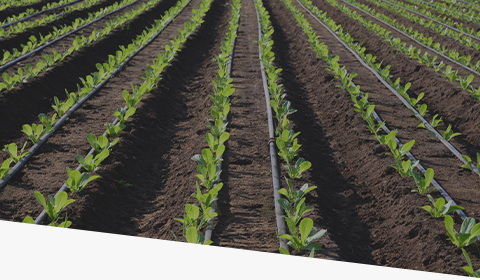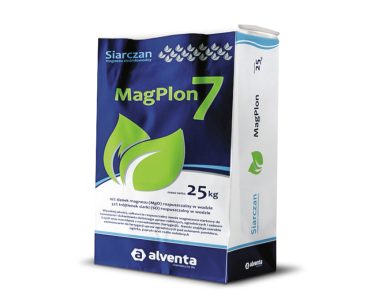- It prevents Mg and S deficiencies and enhances chlorophyll activity. Introducing these two elements at a critical stage helps crops realize their full potential
- A source of magnesium for fertigation in greenhouse crops as well as irrigation in field crops
Magnesium Sulfate (MgSO₄.7H₂O)
High-quality, fully water-soluble fertilizer for fertigation and foliar feeding in greenhouse and field crops. Magnesium regulates the uptake of nutrients and water by plant roots. A magnesium deficiency leads to slow growth, which worsens the quality of the produce. Magnesium sulfate is rich in sulfur, which increases the content of proteins, amino acids, starch, and dry matter in plants. Sulfur deficiency can inhibit growth. Sulfur also enhances the absorption of nutrients.
Magnesium and potassium are antagonists. High levels of potassium in plants or soil can reduce the availability of magnesium, which may decrease yields and quality of produce. Other cations such as ammonium (NH4+), calcium (Ca2+), hydrogen (H+) (at low pH), and aluminum (Al3+) also reduce magnesium availability to plants due to their antagonism with magnesium.
Magnesium sulfate should be applied to moist soil or before expected rainfall. Its primary application is in combination with nitrogen and phosphorus fertilizers (in the spring) and phosphorus fertilizers (in the fall) when preparing the soil for seeding, depending on the soil’s agrochemical indicators.
Magnesium sulfate can be used alone or in combination with other fertilizers and plant protection products.
Application rates of magnesium sulfate:
In greenhouses – 0.01- 0.1% (0.1-1 kg / 1000 l of water)
Area – 0.1 – 0.2% (1 – 2 kg / 1,000 l of water)
The application rate in the tank mix is 10-12 kg/Ha
Magnesium sulfate is not compatible with calcium fertilizers due to the risk of formation of precipitates.
- It prevents Mg and S deficiencies and enhances chlorophyll activity. Introducing these two elements at a critical stage helps crops realize their full potential
- A source of magnesium for fertigation in greenhouse crops as well as irrigation in field crops
Magnesium and potassium are antagonists. High levels of potassium in plants or soil can reduce the availability of magnesium, which may decrease yields and quality of produce. Other cations such as ammonium (NH4+), calcium (Ca2+), hydrogen (H+) (at low pH), and aluminum (Al3+) also reduce magnesium availability to plants due to their antagonism with magnesium.
Magnesium sulfate should be applied to moist soil or before expected rainfall. Its primary application is in combination with nitrogen and phosphorus fertilizers (in the spring) and phosphorus fertilizers (in the fall) when preparing the soil for seeding, depending on the soil’s agrochemical indicators.
Magnesium sulfate can be used alone or in combination with other fertilizers and plant protection products.
Application rates of magnesium sulfate:
In greenhouses – 0.01- 0.1% (0.1-1 kg / 1000 l of water)
Area – 0.1 – 0.2% (1 – 2 kg / 1,000 l of water)
The application rate in the tank mix is 10-12 kg/Ha
Magnesium sulfate is not compatible with calcium fertilizers due to the risk of formation of precipitates.




